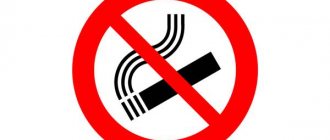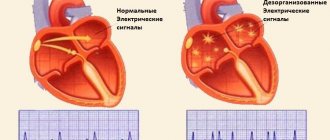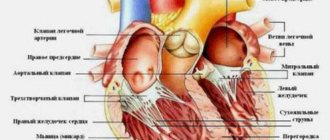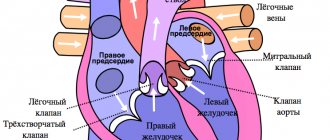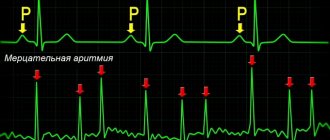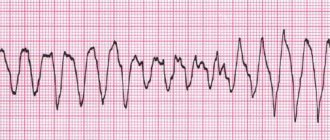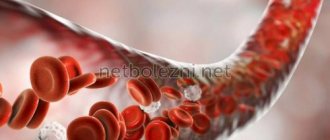Possible complications after cardiac cryoablation
Complications are rare, but no procedure is guaranteed to be risk-free. Before you undergo the procedure, you need to be aware of possible complications, which may include:
- Bleeding;
- Infection;
- Pain at the catheter insertion site;
- Blood clots;
- Injuries to blood vessels and heart;
- Abnormal heart rhythm;
- Heart attack;
- Heart puncture.
Factors that may increase the risk of complications include:
- Smoking
The level of risk may be related to the specific type of arrhythmia.
Cardiac ablation: types
There are several types of cardiac ablation.
Catheter ablation
In this approach, surgeons insert long, thin tubes called catheters into blood vessels to destroy destructive cells in the heart.
Medical facilities use a variety of methods to remove cells that cause arrhythmia, including:
- radio frequency that creates heat
- freezing
Surgical ablation
Surgical ablation, also known as maze surgery or the Cox maze procedure, aims to eliminate atrial fibrillation (A-fib).
This is a form of open heart surgery that is often performed when surgery is being done for additional heart problems, such as valve replacement or heart bypass surgery.
The maze procedure involves making small incisions in the upper chambers of the heart, called the atria. This causes scar tissue to form, which blocks the electrical signals that cause A-fib.
Some people have minimally invasive surgery, the Cox maze procedure (also known as a mini-maze procedure), in which small incisions are made to reduce the risk of complications.
Hybrid surgical-catheter ablation
Hybrid surgical-catheter ablation combines catheter ablation, which treats the inside of the heart, with a mini-maze procedure, which treats the outer layer of the heart.
How is cryoablation performed?
Preparation for the procedure
The doctor will likely do the following:
- Electrophysiological examination (cardiac EPS) to accurately determine the location of abnormal rhythms;
- Ask you to stop taking medications that were previously used to treat arrhythmia.
Before the procedure:
- You should not eat or drink anything for eight hours before the procedure;
- Follow your doctor's instructions.
Anesthesia
A local anesthetic will be administered. It will numb the area where the catheter will be inserted. You will also receive a mild sedative through an IV into your arm. This will help you relax during the procedure.
Description of the procedure
A special ablation catheter will be inserted into a blood vessel in the groin, upper thigh, arm, or wrist. The area where the catheter will be inserted will be cleaned and numbed using anesthesia.
The catheter will be inserted into the artery and connected to the blood vessels in the heart. The doctor will be able to see the catheter on the screen of a special X-ray machine.
The doctor finds the source of the arrhythmia. This will be done by identifying the location of the arrhythmia with a special catheter tip. Once the problem area is found, it will be cooled using the tip of the catheter. If the source of the arrhythmia is found correctly, the problem will disappear. If the site is chosen incorrectly, the cold end of the catheter is removed and the tissue will not be damaged in any way.
When the location of the arrhythmia has been correctly identified, the tip of the catheter will be cooled to -70°C. This will freeze the heart tissue and eliminate the arrhythmia. The search procedure is repeated until all sources of arrhythmia are eliminated.
Immediately after the procedure
You will be moved to the recovery room. Staff will monitor vital signs for several hours to look for symptoms of tenderness, heart rhythm problems, or bleeding from the catheter site.
You need to lie on your back for a period of time. A bandage may be placed over the site where the catheter was inserted to prevent bleeding. It is important to follow the directions of your nurse and doctor.
Cardiac ablation: what is it?
Cardiac ablation is a procedure that can help correct arrhythmia, a problem with the rhythm of the heartbeat.
The procedure removes or leaves scars on the heart tissue that causes arrhythmia. There are several different types of cardiac ablation procedures. Each type helps treat different types of arrhythmia.
In this article, we will look at the different types of cardiac ablation surgeries, as well as their risks, preparation, recovery after surgery, and results.
Patient care after cardiac cryoablation
Hospital care
- There may be bruising and pain at the site where the catheter was inserted;
- If the catheter was inserted in the groin area, you need to lie in bed for a while with your legs straight;
- If the catheter was inserted into the wrist or arm, you do not need to stay in bed;
- The catheter insertion site will be monitored for signs of bleeding, swelling, or inflammation;
- Vital parameters will be monitored.
Home care
When you return home after the procedure, follow these steps to ensure a normal recovery:
- Take aspirin as directed for 2 to 4 weeks. This will help reduce the risk of blood clots at the catheter insertion site;
- You can return to normal activities, walking or climbing stairs is allowed. Avoid heavy or physical activity for 24 hours. In most cases, you will be able to return to your normal activity level within a few days;
- It is necessary to make visits to the doctor in a timely manner. Catheter insertion sites should be checked for complications.
This procedure has an extremely high success rate and low risk of complications. However:
- If atrial fibrillation or ventricular tachycardia is present, antiarrhythmic therapy may need to be continued;
- After AV node cryoablation, you will need a pacemaker.
RFA or cryoablation?
Isolation of the pulmonary veins, which produce the chaotic electrical signals that cause atrial fibrillation, is known to be a standard treatment for patients with atrial fibrillation. Cryoballoon ablation uses a coolant to create circular contiguous lesions and thereby isolate the pulmonary veins, while radiofrequency ablation uses heat (radiofrequency energy) but also requires 3D mapping and step-by-step treatment.
FIRE AND ICE is the largest randomized international clinical trial to compare two ablation techniques used to treat atrial fibrillation, cryoablation (“Ice”), which uses Arctic Front cryoballoons, and radiofrequency. ablation (“Flame”) using ThermoCool radiofrequency ablation catheters
The study results were presented at the Sixty-fifth Annual Scientific Session of the American College of Cardiology April 2-4, 2021, and simultaneously published in The New England Journal of Medicine.
The study was led by the famous Professor Karl-Heinz Kuck, Director of the Cardiology Department of the Asklepios Klinik St. Georg in Hamburg, Germany.
The study involved 769 patients from 16 medical centers across Europe. All study subjects had a diagnosis of paroxysmal atrial fibrillation, had failed at least one antiarrhythmic drug, and had been seen for no longer than 33 months (mean = 1.54 years) after the first ablation procedure. The main objective of this type of research is to prove that the new technology is comparable to the generally accepted existing technology.
The study met its primary efficacy endpoint of demonstrating that cryoballoon ablation was noninferior to radiofrequency ablation (p=0.0004) in terms of reducing the incidence of arrhythmia recurrences or the need for antiarrhythmic drug therapy and/or repeat ablation. The primary safety endpoint of time to first death from any cause, stroke or TIA (transient ischemic attack) from any cause, or treatment-related serious adverse events was also met (p = 0.24).
Both technologies showed comparable low complication rates. According to the study, cryoballoon ablation technology provided shorter procedure times (mean = 124 minutes) compared with radiofrequency ablation group (mean = 141 minutes; p = 0.0001), but the use of a radiofrequency catheter allowed shorter fluoroscopy time. time (mean = 17 minutes) compared with cryoballoon ablation catheter (mean = 22 minutes; p = 0.0001).
The study authors said they believe the findings will help move interventional arrhythmology interventions away from highly specialized clinics and toward less-trained physicians. If atrial fibrillation ablation can be performed easily and safely, it is likely that more patients will be treated, and perhaps at an earlier stage of the disease. Perhaps someday they will deal with fibrillation in the same way as is now recommended to do with WPW syndrome - perform intervention after the first paroxysm.
Although the study discussed was conducted on a small sample of patients, it is expected that the findings may change current clinical guidelines. In particular, it may be taken into account by experts currently working on the third update of the Heart Rhythm Society (HRS) consensus statement.
In June 2021, results regarding secondary endpoints were presented at the latest CARDIOSTIM European Congress. The study demonstrated significantly fewer need for repeat ablations and lower hospitalization rates for patients with paroxysmal atrial fibrillation in the cryoballoon pulmonary vein isolation group. Quality of life was assessed at baseline and 6 months after the procedure; the data were comparable in the study groups.
Thus, cryoballoon ablation is a safe and effective method that can reduce the duration of the procedure, make the treatment schedule more predictable in time, reduce the need for repeated procedures, reduce the number of hospitalizations and improve the quality of life of patients.
Contacting your doctor after cardiac cryoablation
After returning home, you should consult a doctor if the following symptoms appear:
- Signs of infection, including fever and chills;
- Redness, swelling, increased pain, bleeding, or discharge at the catheter site;
- The leg into which the catheter was inserted becomes cold, white or blue, numb, or tingling;
- cough, shortness of breath, chest pain, or severe nausea or vomiting;
- Discomfort in the jaw, chest, neck, arm, or upper back;
- Dizziness and weakness.
Why is cardiac ablation necessary?
Surgeons commonly use cardiac ablation to treat a number of conditions.
Supraventricular tachycardia (SVT)
SVT is the most common cause of surgical cardiac ablation. This is a condition in which the heart suddenly begins to beat much faster than its normal resting rate of 60–100 beats per minute. The electrical signal comes from the upper parts of the heart.
Atrial flutter
Atrial flutter is when the upper chambers of the heart beat very quickly due to improper transmission of electrical signals in the heart, often as a result of other heart problems such as coronary artery disease and high blood pressure.
Fibrillation
Fibrillation is a condition that causes irregular heartbeats in the upper chambers of the heart. This increases the risk of stroke and heart failure and can lead to an enlarged heart.
For fibrillation, a cardiac ablation procedure is often performed.
Other cardiac complications
Arrhythmia is also often a reason for cardiac ablation.
